by Carolyn Bernhardt
November 13, 2023
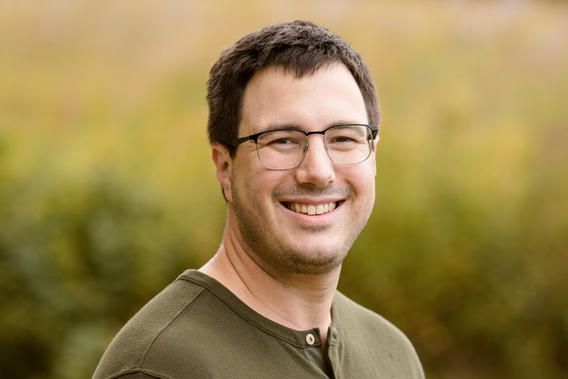
Meet Mike Schuster, PhD, a dynamic and dedicated researcher in the Department of Forest Resources in the College of Food, Agricultural, and Natural Resource Sciences at the University of Minnesota. Schuster’s work delves into the intricate interactions between global environmental shifts and their impact on plant communities and ecosystem processes, with an emphasis on how invasive plant species, climate change, and nitrogen deposition shape our natural world.
“Human well-being is intimately linked to the natural world,” says Schuster. “The loss of biodiversity and associated natural processes is a growing burden for us and future generations. By working to understand the natural world and develop new management strategies, I hope to move the needle at least in some small way to preserve the natural world and the benefits we derive from it.”
Through his research, Schuster and project collaborators help provide invaluable insights into how plant communities adapt and thrive in the face of environmental changes and invasions. Currently, Schuster is spearheading innovative techniques to combat common buckthorn as a vital part of the Minnesota Invasive Terrestrial Plants and Pests Center.
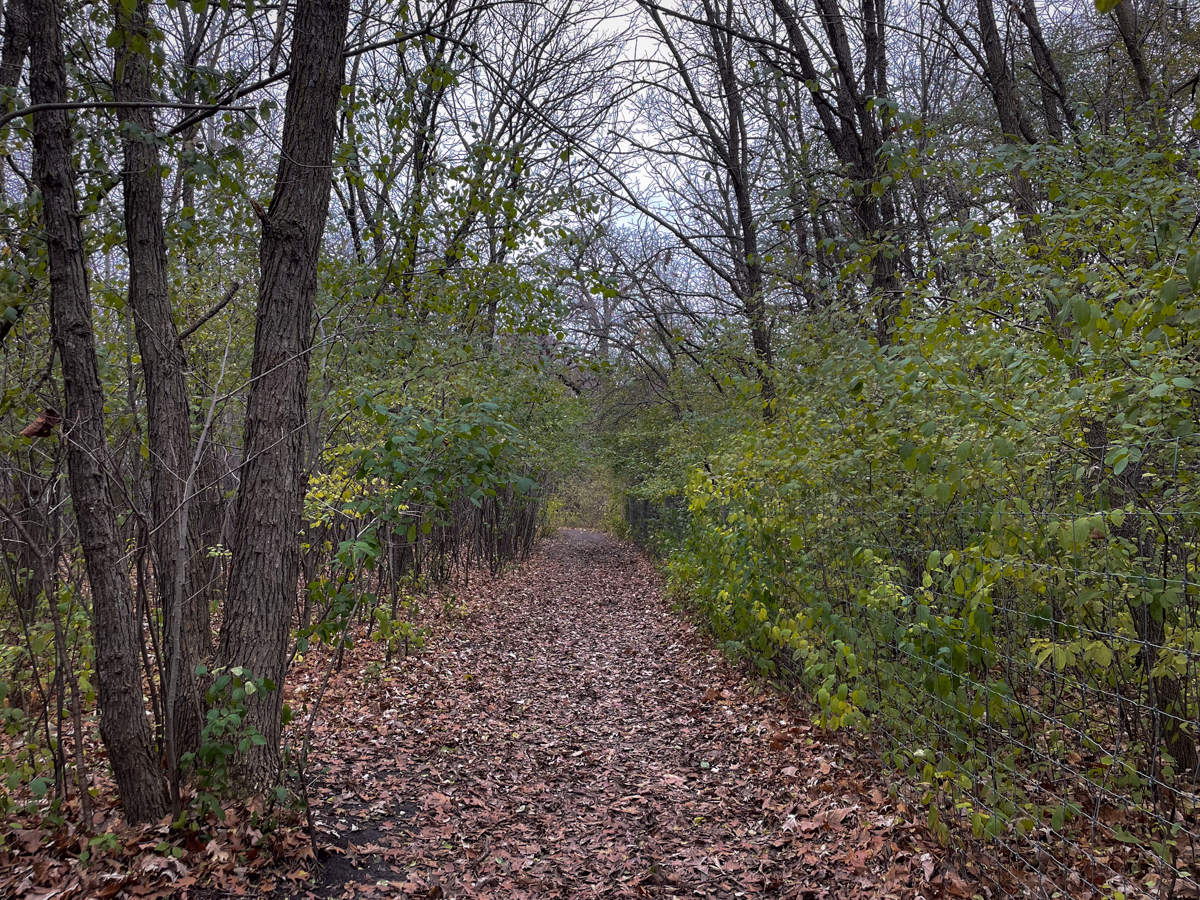
Common buckthorn, a destructive invader in Minnesota's forests, often defies traditional removal methods, leaving land managers grappling with recurring expenses and temporary solutions. It has long plagued the Eastern North American woodlands, thwarting conventional control methods with its rapid resurgence.
Using plants to control buckthorn
With the "Cover it Up! Using Plants to Control Buckthorn" projects, Schuster and his teammates are unraveling the mysteries of buckthorn management. The team is made up of faculty, postdocs, staff researchers, and students. They are dedicated to harnessing the power of native plants to quell buckthorn's resurgence. They work with partners from around the state, including Washington County, Ramsey County, Minnesota Department of Natural Resources, Friends of the Mississippi River, Three Rivers Park District, Shakopee Mdewakanton Sioux Community, St. Croix Watershed Research Station, and many others.
“Minnesotans spend countless hours and millions of dollars removing buckthorn each year for what is often only temporary gains,” says Schuster. Small buckthorn take advantage of the light and nutrients freed up by removing their larger counterparts, and without sufficient native plants to compete for those resources, those small buckthorn turn into big buckthorn very quickly. “If we can get native plants back into the fight, buckthorn will do worse, native ecosystems will do better, and we can save ourselves a lot of time and effort.”
In the project’s first phase, Schuster and the team investigated native planting techniques, uncovering the potential of densely planted native species to stifle new buckthorn growth. They saw that buckthorn seeds lie dormant in the soil for just 1 to 2 years, rather than the previously believed 6.
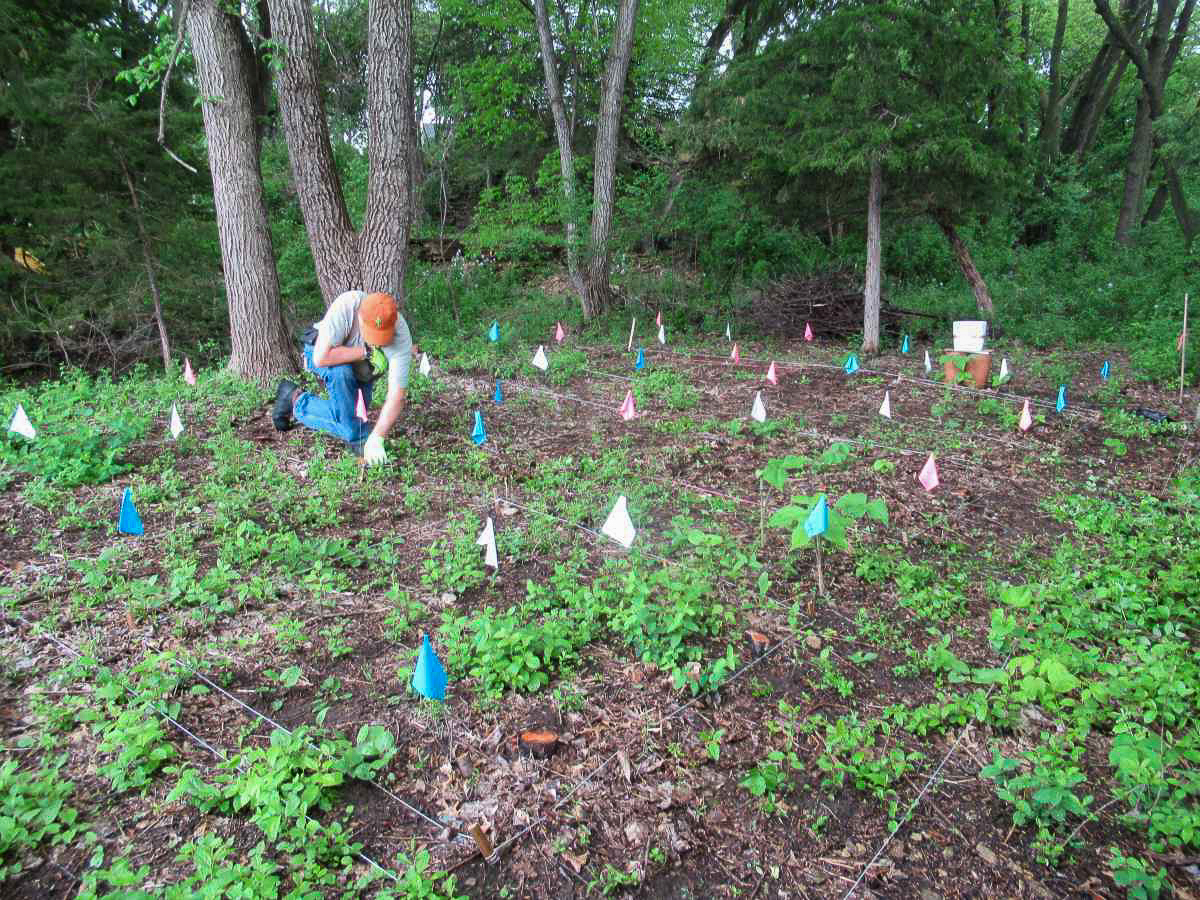
Overall, this is positive news, as it indicates that the buckthorn population will be vulnerable for a shorter period than expected. This allows for a more concentrated and effective management approach, including planting native species. However, Schuster warns that the rapid germination of buckthorn seeds leaves no room for a grace period in establishing native plants. It's essential to act swiftly and densely to outcompete the new buckthorn growth.
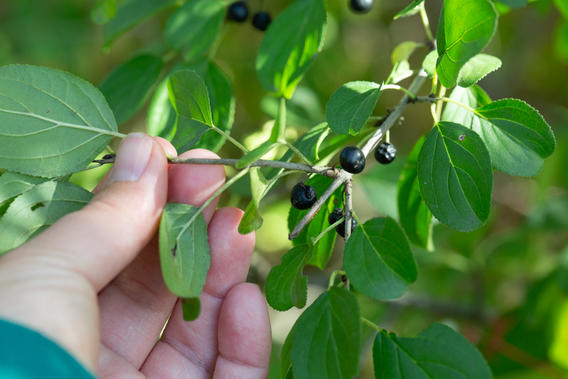
Bolstering their mission, they established a citizen science network with 100 participants, each with 6 plots, to assess the efficacy of native seeding across 600 plots. In the second phase, they delved into the intricacies of slow-growing native plants, deer interactions, fire management, and cost-effective suppression methods, utilizing the keen eyes of citizen scientists to scrutinize revegetation seed mixtures in diverse settings.
The ongoing third phase seeks to pinpoint the optimal density of trees, shrubs, and herbaceous species to stymie buckthorn and carefully evaluate its impact on both buckthorn and native flora. “A lot of our early work focused on evaluating if it was even possible to get native plants to perform at a level where they could suppress buckthorn,” Schuster says. The team had anecdotal evidence from places like sugar maple forests where buckthorn seems to do very poorly. They also knew that seeding native species can be effective in grasslands. However, sugar maple forests and grasslands are very different environments than the ones created by successful buckthorn invasions. “As our understanding of buckthorn's weaknesses grew, we started to shift from asking if we could suppress buckthorn, to asking how to make it as reasonable as possible for the largest number of people and in the greatest diversity of Minnesota ecosystems.”
Revegetation as a part of buckthorn management
A newer initiative Schuster is involved in, funded and initiated in January 2023, seeks to further revolutionize buckthorn management by finding ways to optimize native plant revegetation, establishing the most effective chemical-free methods for buckthorn removal, and adapting seed mixes to plant vegetation that help combat buckthorn while serving and safeguarding essential pollinator communities. “We are specifically looking at a somewhat novel method of repeated cutting to see how, when, and where that cutting can lead to buckthorn mortality without herbicide use,” says Schuster.

“Our work up until this point has been increasingly pragmatic, but still experimental,” he says. “In this latest phase, we're taking a massive step forward in making buckthorn suppression feasible in everyday settings. If we find something that works, but people don't want to use it, we really haven't gotten very far. So, here we are doing our best to identify approaches that are cost-effective, improve habitat for Rusty Patch Bumble Bee and other pollinators, and avoid the complexities of using herbicides.”
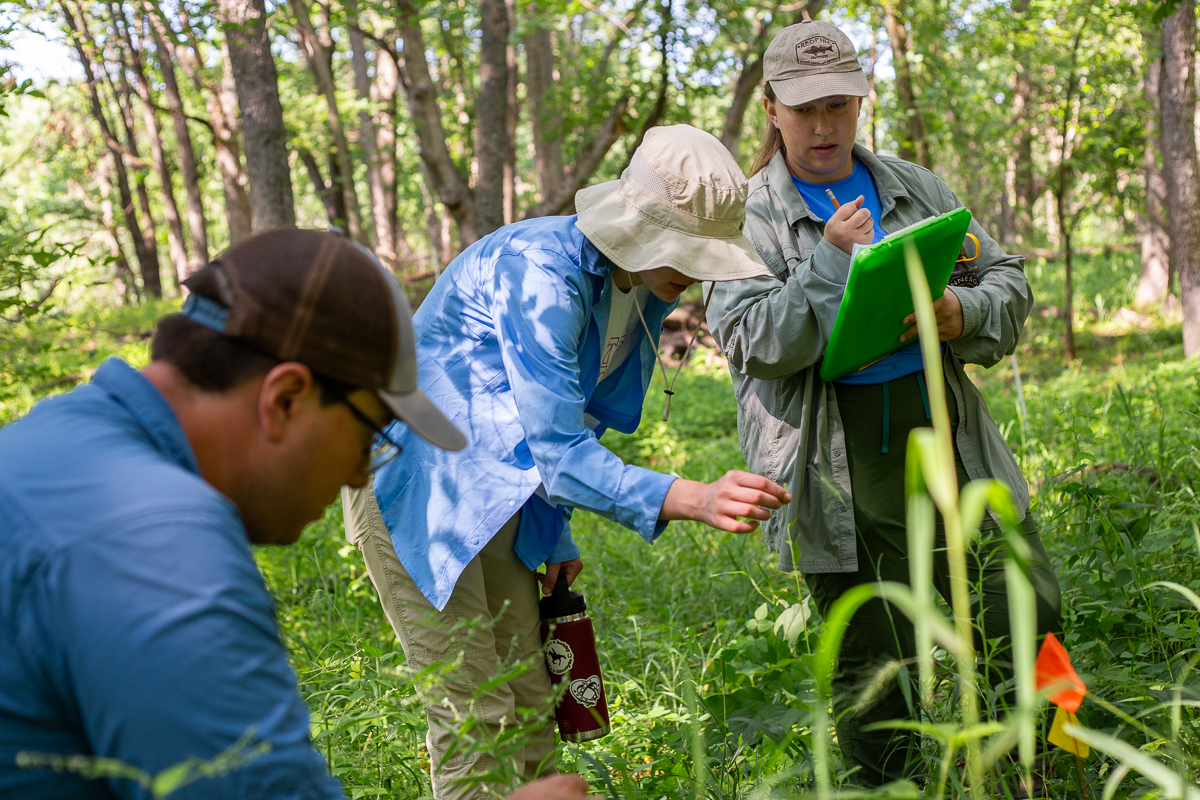
This work helps move buckthorn management toward a future with a drastically reduced reliance on chemicals, as well as saved time and resources. As such, the pursuit will hopefully make revegetation post-buckthorn removal not only cost-effective but also environmentally friendly. Plus, this multi-faceted approach could set a precedent for controlling invasive species other than buckthorn, too, elevating biodiversity, and creating flourishing habitats in ecosystems that need it most.
Schuster says there are no silver bullets to dealing with buckthorn or other invasive species. Fortunately, the research has shown that planting native species, like wild rye grasses in high-light environments and shrubs like Red elderberry in areas where they can be protected from deer, can effectively prevent those small buckthorn from resurging after large trees have been removed. “And it's not just common buckthorn: we've seen similar results with other invasive plants, too,” he says. “This work shows that by investing in native species, we can simultaneously fortify forests against invasion, enhance biodiversity, and make natural areas more valuable to humans in some pretty fundamental ways.”
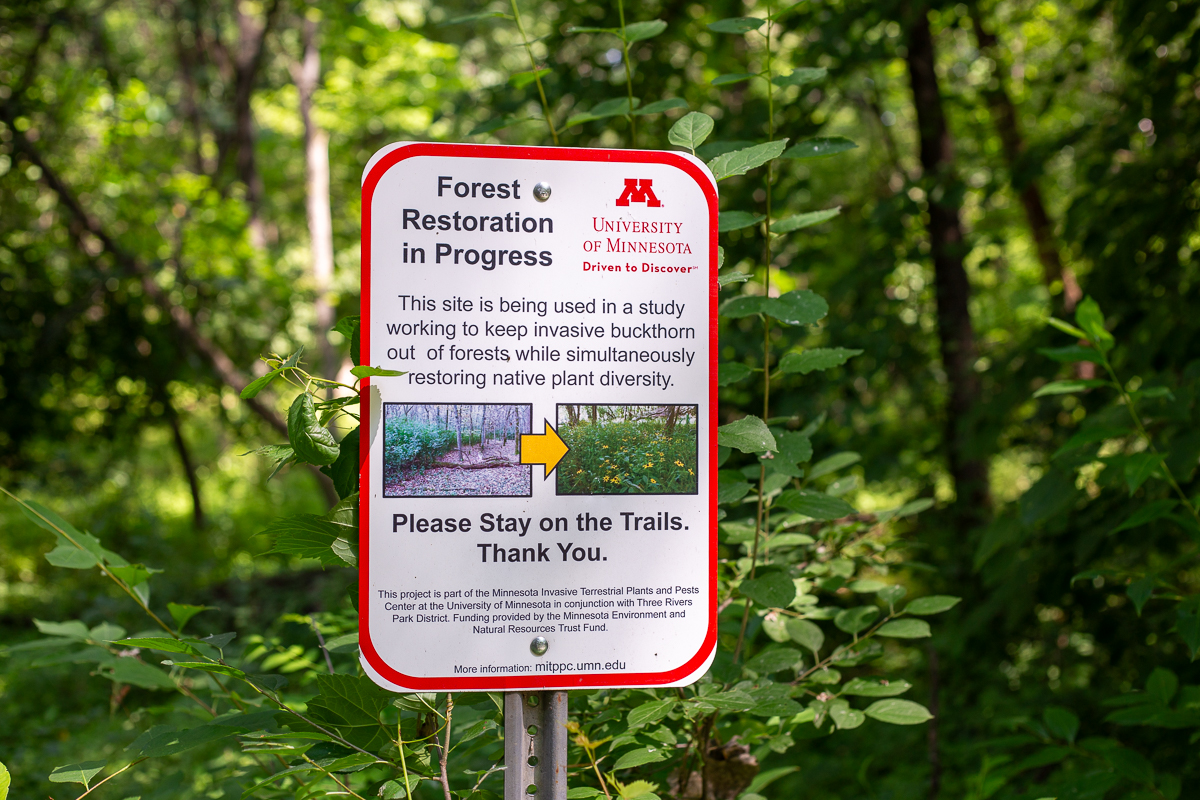
Forests provide us with essential benefits like clean air, water, wood products, and recreational and cultural value—all of which is threatened by the overgrowth of buckthorn. Taking action to reduce buckthorn’s impact now secures these vital resources for future generations.
“That is why this work, and the tremendous support and flexibility granted to us by MITPPC, is so important,” Schuster says. “This is a massive challenge, but we continue to develop new tools and grow our understanding in ways that should give people hope and embolden them to take action.”
The Minnesota Invasive Terrestrial Plants and Pests Center research is supported by the Environment and Natural Resources Trust Fund, as recommended by the Legislative-Citizen Commission for Minnesota Resources.
Stay connected by signing up for the MITPPC newsletter or follow us on LinkedIn or Facebook.
You may also like...
Uprooting decades of buckthorn management practices: no long-lived seedbank
A guide to forest understory revegetation to help manage buckthorn and other invasive plants
Buckthorn research papers by MITPPC
Buckthorn management, MN Department of Natural Resources
Biological control of buckthorn using fungi, research project
Goat-grazing for invasive plant control, research project